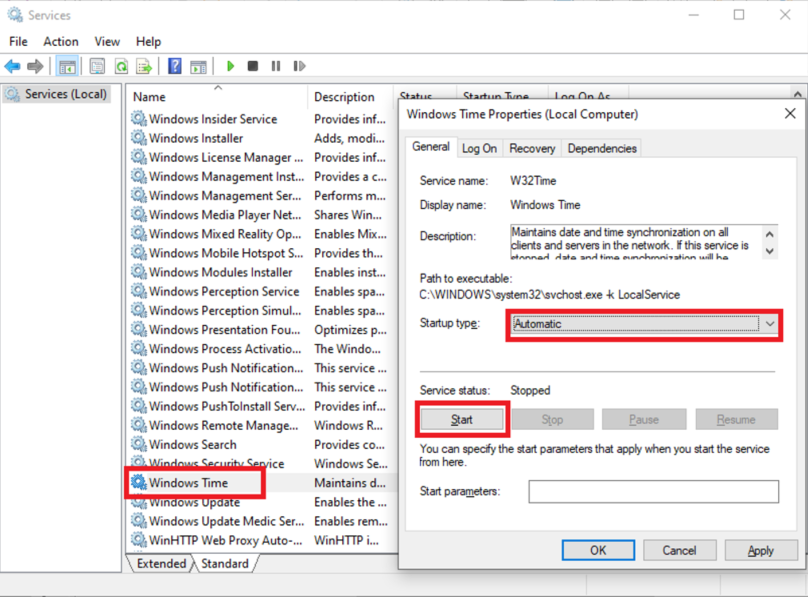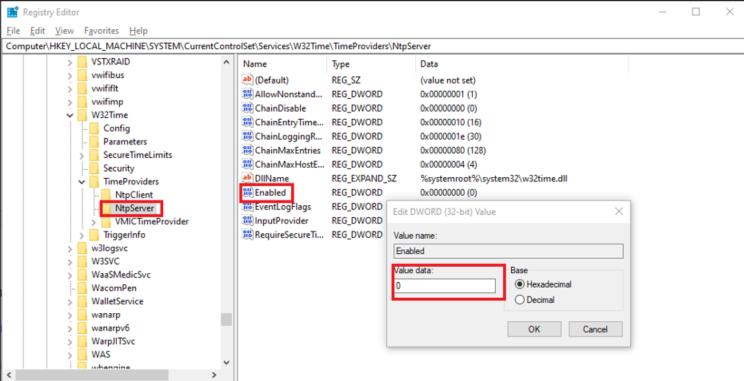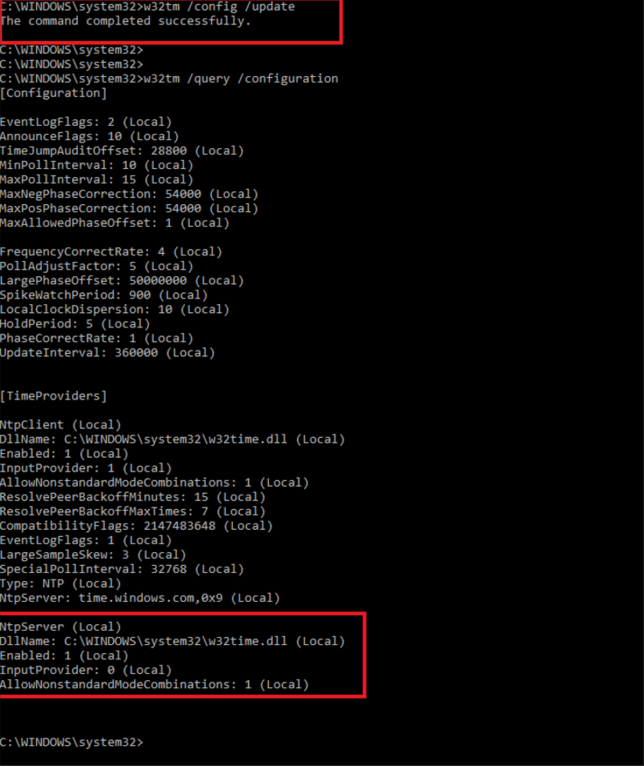Enabling Cookie Authentication in the ASP.NET Core Backend
In the Backend I’ve started by adding Cookie Authentication in the startup and override the OnRedirectToLogin event handlers, so they are going to return a HTTP Status Code 401 to the consumer. This is handled in the Exception Handling Middleware and not shown here.
// Cookie Authentication
builder.Services
.AddAuthentication(CookieAuthenticationDefaults.AuthenticationScheme)
.AddCookie(options =>
{
options.Cookie.HttpOnly = true;
options.Cookie.SameSite = SameSiteMode.Lax; // We don't want to deal with CSRF Tokens
options.Events.OnRedirectToAccessDenied = context => throw new AuthenticationFailedException();
options.Events.OnRedirectToLogin = context => throw new AuthenticationFailedException();
});
The user is signed in using HttpContext#SignInAsync with something along the lines of a AuthenticationController:
// Licensed under the MIT license. See LICENSE file in the project root for full license information.
// ...
namespace RebacExperiments.Server.Api.Controllers
{
public class AuthenticationController : ODataController
{
// ...
[HttpPost("odata/SignInUser")]
public async Task SignInUser([FromServices] IUserService userService, [FromBody] ODataActionParameters parameters, CancellationToken cancellationToken)
{
// ...
// Create the ClaimsPrincipal
var claimsIdentity = new ClaimsIdentity(userClaims, CookieAuthenticationDefaults.AuthenticationScheme);
var claimsPrincipal = new ClaimsPrincipal(claimsIdentity);
// It's a valid ClaimsPrincipal, sign in
await HttpContext.SignInAsync(claimsPrincipal, new AuthenticationProperties { IsPersistent = rememberMe });
// ...
}
}
}
You can then open your Browsers Developer Tools and see, that an (encrypted) Cookie has been created.

Enabling Cookie Authentication in Blazor WebAssembly
Once we have successfully logged in and got our Cookie, we need to send the Authorization Cookie on every request to the API. So we start by adding a CookieDelegatingHandler, that does just that:
// Licensed under the MIT license. See LICENSE file in the project root for full license information.
using Microsoft.AspNetCore.Components.WebAssembly.Http;
using RebacExperiments.Blazor.Shared.Logging;
namespace RebacExperiments.Blazor.Infrastructure
{
public class CookieDelegatingHandler : DelegatingHandler
{
private readonly ILogger _logger;
public CookieDelegatingHandler(ILogger logger)
{
_logger = logger;
}
protected override async Task SendAsync(HttpRequestMessage request, CancellationToken cancellationToken)
{
_logger.TraceMethodEntry();
request.SetBrowserRequestCredentials(BrowserRequestCredentials.Include);
return await base.SendAsync(request, cancellationToken);
}
}
}
The CookieDelegatingHandler needs to be registered for the HttpClient, so we use the IHttpClientBuilder#AddHttpMessageHandler extension method like this:
builder.Services
.AddHttpClient(client => client.BaseAddress = new Uri("https://localhost:5000"))
.AddHttpMessageHandler();
The Blazor Authorization Infrastructure uses an AuthenticationStateProvider to pass the user information into the components. We want to persist the user information across page refreshes, so the local storage of a Browser seems to be a good place to persist it.
We don’t need to take additional dependencies, just write a small LocalStorageService.
// Licensed under the MIT license. See LICENSE file in the project root for full license information.
using Microsoft.JSInterop;
using System.Text.Json;
namespace RebacExperiments.Blazor.Infrastructure
{
public class LocalStorageService
{
private IJSRuntime _jsRuntime;
public LocalStorageService(IJSRuntime jsRuntime)
{
_jsRuntime = jsRuntime;
}
public async Task GetItemAsync(string key)
{
var json = await _jsRuntime.InvokeAsync("localStorage.getItem", key);
if (json == null)
{
return default;
}
return JsonSerializer.Deserialize(json);
}
public async Task SetItem(string key, T value)
{
await _jsRuntime.InvokeVoidAsync("localStorage.setItem", key, JsonSerializer.Serialize(value));
}
public async Task RemoveItemAsync(string key)
{
await _jsRuntime.InvokeVoidAsync("localStorage.removeItem", key);
}
}
}
And register it in the Program.cs.
builder.Services.AddSingleton();
We can then implement an AuthenticationStateProvider, that allows us to set a User (think of User Profile) and notify subscribers about the new AuthenticationState. The User is persisted using our LocalStorageService.
// Licensed under the MIT license. See LICENSE file in the project root for full license information.
using Microsoft.AspNetCore.Components.Authorization;
using RebacExperiments.Shared.ApiSdk.Models;
using System.Security.Claims;
namespace RebacExperiments.Blazor.Infrastructure
{
public class CustomAuthenticationStateProvider : AuthenticationStateProvider
{
private const string LocalStorageKey = "currentUser";
private readonly LocalStorageService _localStorageService;
public CustomAuthenticationStateProvider(LocalStorageService localStorageService)
{
_localStorageService = localStorageService;
}
public override async Task GetAuthenticationStateAsync()
{
var currentUser = await GetCurrentUserAsync();
if(currentUser == null)
{
return new AuthenticationState(new ClaimsPrincipal(new ClaimsIdentity()));
}
Claim[] claims = [
new Claim(ClaimTypes.NameIdentifier, currentUser.Id!.ToString()!),
new Claim(ClaimTypes.Name, currentUser.LogonName!.ToString()!),
new Claim(ClaimTypes.Email, currentUser.LogonName!.ToString()!)
];
var authenticationState = new AuthenticationState(new ClaimsPrincipal(new ClaimsIdentity(claims, authenticationType: nameof(CustomAuthenticationStateProvider))));
return authenticationState;
}
public async Task SetCurrentUserAsync(User? currentUser)
{
await _localStorageService.SetItem(LocalStorageKey, currentUser);
NotifyAuthenticationStateChanged(GetAuthenticationStateAsync());
}
public Task GetCurrentUserAsync() => _localStorageService.GetItemAsync(LocalStorageKey);
}
}
Don’t forget to register all authentication related services.
builder.Services.AddAuthorizationCore();
builder.Services.AddCascadingAuthenticationState();
builder.Services.AddSingleton();
builder.Services.AddSingleton(s => s.GetRequiredService());
In the App.razor add the CascadingAuthenticationState and AuthorizeRouteView components, so the AuthenticationState flows down to the components automagically.
@using Microsoft.AspNetCore.Components.Authorization
Not found
Sorry, there's nothing at this address.
In the MainLayout, you can then use the <AuthorizeView> component, that allows to check, if a given user is authorized or not. If the User is not authorized, we are redirecting to the Login page using a <RedirectToLogin> component.
@using Microsoft.AspNetCore.Components
@using System.Runtime.InteropServices
@using RebacExperiments.Blazor.Components
@using RebacExperiments.Blazor.Components.RedirectToLogin
@namespace RebacExperiments.Blazor.Shared
Relationship-based Experiments with ASP.NET Core OData
The <RedirectToLogin> component simply uses the NavigationManager to navigate to the Login Page.
@inject NavigationManager Navigation
@code {
protected override void OnInitialized()
{
var baseRelativePath = Navigation.ToBaseRelativePath(Navigation.Uri);
if(string.IsNullOrWhiteSpace(baseRelativePath))
{
Navigation.NavigateTo($"Login", true);
} else {
Navigation.NavigateTo($"Login?returnUrl={Uri.EscapeDataString(baseRelativePath)}", true);
}
}
}
Now what happens, if the Web service returns a HTTP Status Code 401 (Unauthorized) and we still have the User in the Local Storage? Yes, it will be out of sync. So we need to update the AuthenticationState and clear the User information, if the service returns a HTTP Status Code 401.
This can be done by using a DelegatingHandler, that takes a dependency on our CustomAuthenticationStateProvider, and sets the current User to null. This should inform all subscribers, that we are now unauthorized to perform actions.
// Licensed under the MIT license. See LICENSE file in the project root for full license information.
using RebacExperiments.Blazor.Shared.Logging;
namespace RebacExperiments.Blazor.Infrastructure
{
public class UnauthorizedDelegatingHandler : DelegatingHandler
{
private readonly ILogger _logger;
private readonly CustomAuthenticationStateProvider _customAuthenticationStateProvider;
public UnauthorizedDelegatingHandler(ILogger logger, CustomAuthenticationStateProvider customAuthenticationStateProvider)
{
_logger = logger;
_customAuthenticationStateProvider = customAuthenticationStateProvider;
}
protected override async Task SendAsync(HttpRequestMessage request, CancellationToken cancellationToken)
{
_logger.TraceMethodEntry();
var response = await base.SendAsync(request, cancellationToken);
if(response.StatusCode == System.Net.HttpStatusCode.Unauthorized)
{
var currentUser = await _customAuthenticationStateProvider.GetCurrentUserAsync();
if(currentUser != null)
{
await _customAuthenticationStateProvider.SetCurrentUserAsync(null);
}
}
return response;
}
}
}
You need to add the UnauthorizedDelegatingHandler to the HttpClient.
builder.Services
.AddHttpClient(client => client.BaseAddress = new Uri("https://localhost:5000"))
.AddHttpMessageHandler()
.AddHttpMessageHandler();
Now let’s connect everything!
I want the Login Page to have its own layout and don’t want to use the MainLayout. So I am adding an <EmptyLayout> component.
@inherits LayoutComponentBase
@Body
This EmptyLayout is then used as the Layout for the Login Page, so I can style it to my needs. The example uses a <SimpleValidator> for validation, that has been developed in a previous article. You could easily replace it with a <DataAnnotationsValidator>, to use Blazors built-in validations.
@page "/Login"
@layout EmptyLayout
@using RebacExperiments.Shared.ApiSdk
@inject ApiClient ApiClient
@inject IStringLocalizer Loc
@inject NavigationManager NavigationManager
@inject CustomAuthenticationStateProvider AuthStateProvider
Login
Login
@if(!string.IsNullOrWhiteSpace(ErrorMessage)) {
}
Let’s take a look at the Login.razor.cs Code-Behind.
The Login#SignInUserAsync methods starts by logging the User in. The Server will return the HttpOnly Cookie, that’s going to be sent with every request to the API. To get the User information for populating the AuthenticationState the /Me endpoint is called. The User is the set in the AuthStateProvider and we navigate to our application.
// Licensed under the MIT license. See LICENSE file in the project root for full license information.
using Microsoft.AspNetCore.Components;
using RebacExperiments.Shared.ApiSdk.Odata.SignInUser;
using System.ComponentModel.DataAnnotations;
using RebacExperiments.Blazor.Infrastructure;
using Microsoft.Extensions.Localization;
namespace RebacExperiments.Blazor.Pages
{
public partial class Login
{
///
/// Data Model for binding to the Form.
///
private sealed class InputModel
{
///
/// Gets or sets the Email.
///
[Required]
[EmailAddress]
public required string Email { get; set; }
///
/// Gets or sets the Password.
///
[Required]
[DataType(DataType.Password)]
public required string Password { get; set; }
///
/// Gets or sets the RememberMe Flag.
///
[Required]
public bool RememberMe { get; set; } = false;
}
// Default Values.
private static class Defaults
{
public static class Philipp
{
public const string Email = "philipp@bytefish.de";
public const string Password = "5!F25GbKwU3P";
public const bool RememberMe = true;
}
public static class MaxMustermann
{
public const string Email = "max@mustermann.local";
public const string Password = "5!F25GbKwU3P";
public const bool RememberMe = true;
}
}
///
/// If a Return URL is given, we will navigate there after login.
///
[SupplyParameterFromQuery(Name = "returnUrl")]
private string? ReturnUrl { get; set; }
///
/// The Model the Form is going to bind to.
///
[SupplyParameterFromForm]
private InputModel Input { get; set; } = new()
{
Email = Defaults.Philipp.Email,
Password = Defaults.Philipp.Password,
RememberMe = Defaults.Philipp.RememberMe
};
///
/// Error Message.
///
private string? ErrorMessage;
///
/// Signs in the User to the Service using Cookie Authentication.
///
///
public async Task SignInUserAsync()
{
ErrorMessage = null;
try
{
await ApiClient.Odata.SignInUser.PostAsync(new SignInUserPostRequestBody
{
Username = Input.Email,
Password = Input.Password,
RememberMe = true
});
// Now refresh the Authentication State:
var me = await ApiClient.Odata.Me.GetAsync();
await AuthStateProvider.SetCurrentUserAsync(me);
var navigationUrl = GetNavigationUrl();
NavigationManager.NavigateTo(navigationUrl);
}
catch
{
ErrorMessage = Loc["Login_Failed"];
}
}
private string GetNavigationUrl()
{
if(string.IsNullOrWhiteSpace(ReturnUrl))
{
return "/";
}
return ReturnUrl;
}
///
/// Validates an <see cref="InputModel"/>.
///
/// InputModel to validate
/// The list of validation errors for the EditContext model fields
private IEnumerable ValidateInputModel(InputModel model)
{
if(string.IsNullOrWhiteSpace(model.Email))
{
yield return new ValidationError
{
PropertyName = nameof(model.Email),
ErrorMessage = Loc.GetString("Validation_IsRequired", nameof(model.Email))
};
}
if(string.IsNullOrWhiteSpace(model.Password))
{
yield return new ValidationError
{
PropertyName = nameof(model.Password),
ErrorMessage = Loc.GetString("Validation_IsRequired", nameof(model.Password))
};
}
}
}
}
In the Login.razor.css we add a bit of styling.
@keyframes fade {
from {
opacity: 0;
}
to {
opacity: 1;
}
}
.container {
position: absolute;
top: 50%;
left: 50%;
transform: translate(-50%, -50%);
animation: fade 0.2s ease-in-out forwards;
}
h1 {
font-size: 35px;
font-weight: 100;
text-align: center;
}
Conclusion
And that’s it! You will now be able to use Cookie Authentication in your Blazor Application.
References
https://www.bytefish.de/blog/blazor_wasm_cookie_authentication.html




